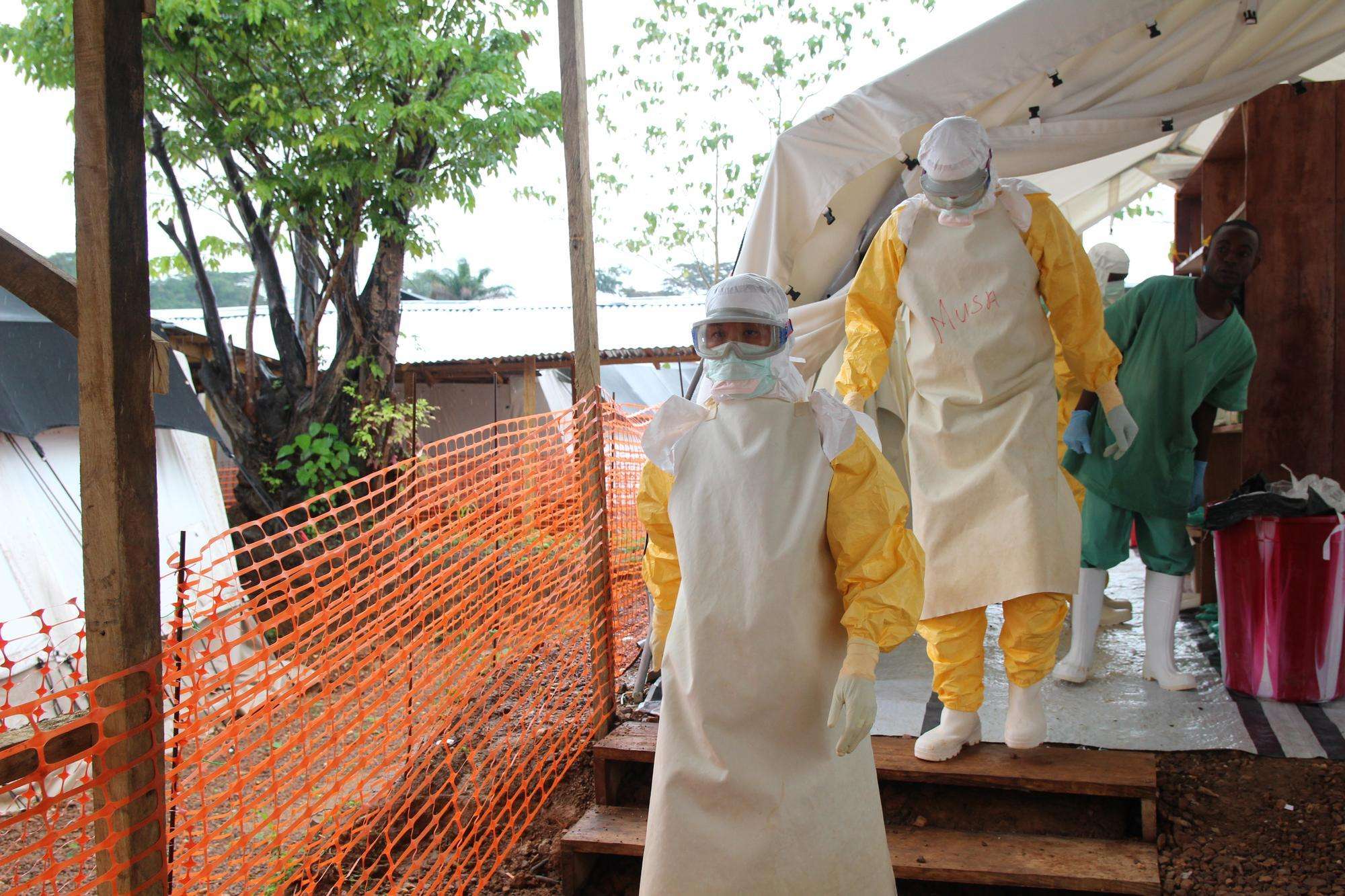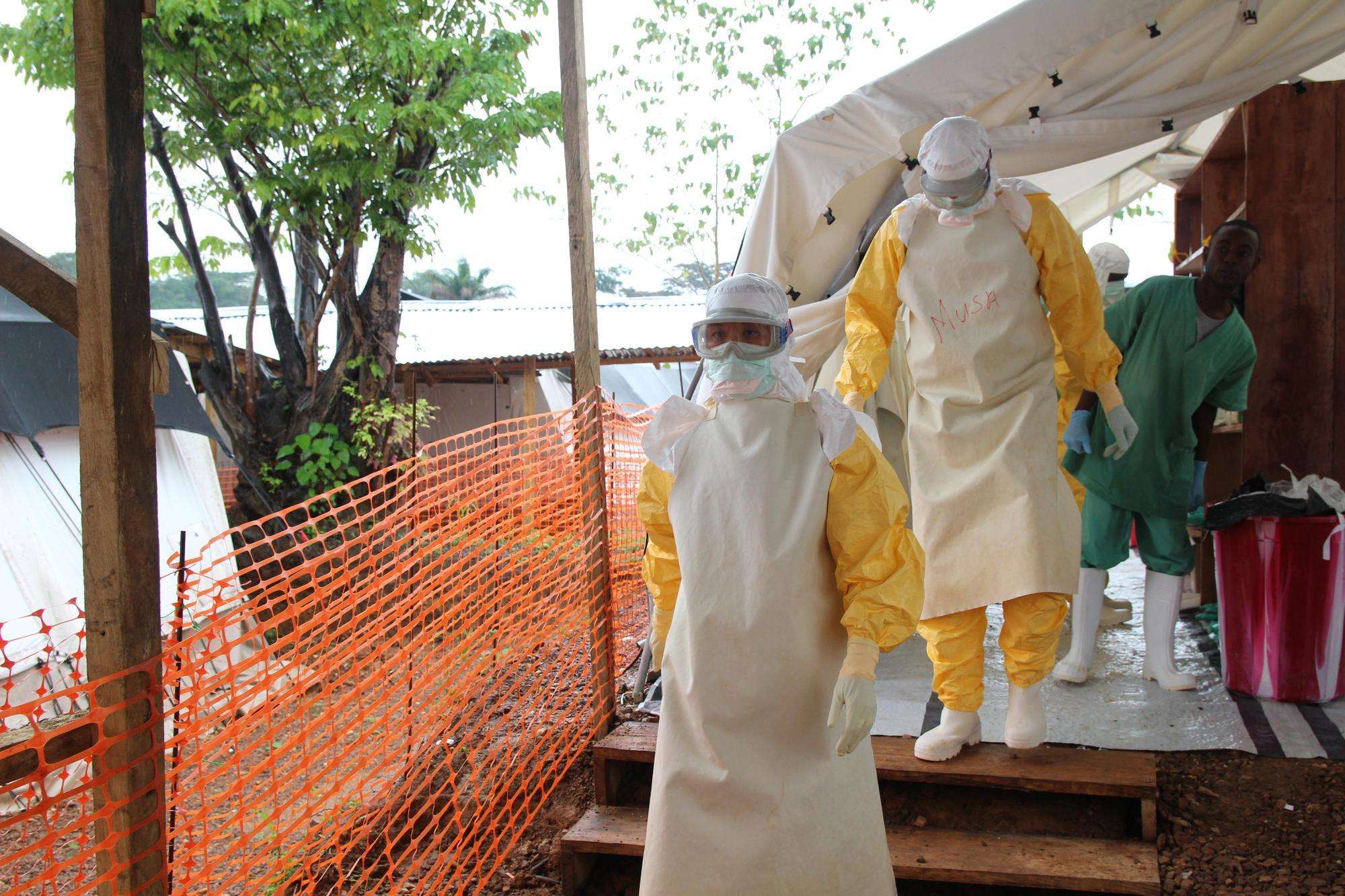Despite the World Health Organization (WHO) declaration that the largest-recorded Ebola hemorrhagic fever epidemic is an “international health emergency,” the global effort to stem the outbreak is dangerously inadequate.
The number of deaths and cases is continuing to increase dramatically in Liberia and Sierra Leone, precipitating a public health crisis in the two West African countries. Meanwhile, the outbreak is continuing to affect people in Guinea, where it originated in March, with new suspected cases continuing to be admitted to medical facilities.
As of August 14, Ebola has claimed 1,069 lives and 1,975 cases have been reported since the outbreak began in March, according to the World Health Organization (WHO).
READ STATEMENT ON THE EBOLA EPIDEMIC FROM MSF INTERNATIONAL PRESIDENT JOANNE LIU
The WHO and states must provide immediate support to the governments of Guinea, Liberia, Nigeria, and Sierra Leone. An immediate and massive international mobilization of medical resources—human and technical—to Liberia and Sierra Leone is required to assist these countries.
It is clear that the Ebola epidemic will not be contained without a massive deployment of medical and disaster relief specialists. The governments of Guinea, Liberia, Nigeria, and Sierra Leone are doing everything they can to try to fight this epidemic. Their doctors and nurses have been dying and risking their lives on the front line of this outbreak. They desperately need international support.
Providing funds is not enough. Available infectious disease experts and disaster relief specialists from countries with these capacities must deploy teams to the affected countries. In addition to a larger deployment of medical and epidemiological specialists, additional laboratory capacity for Ebola testing is required, along with ambulances and helicopters to safely transport samples and suspected cases., Supplies to ensure safe burials are also needed immediately.
International non-governmental organizations must also step up their efforts in region.
Humanitarian Agencies Reaching Limits
Emergency teams from the international medical organization Doctors Without Borders/Médecins Sans Frontières (MSF) are continuing all their efforts to fight the Ebola epidemic. Working in response to the epidemic since March, MSF currently has 1,086 staff operating in Guinea, Sierra Leone, and Liberia, treating a rapidly increasing number of patients. MSF’s top priority is to provide care for patients infected with the virus. The organization has already deployed the maximum number of its experienced human resources.
The countries most affected to date are trying to rebuild after years of civil war; they already struggle to meet the basic health needs of their people, let alone deal with an emergency of this complexity and magnitude. Sierra Leone and Liberia, for instance, have just 0.2 and 0.1 doctors per 10,000 people respectively (compared to the average 2.6 in West Africa and 240 times that number in the United States).
In Liberia and Sierra Leone, many health facilities are closed or empty. People are not seeking care for regular illnesses for fear of being infected with Ebola. Some health workers have been infected or have died. Many are therefore too afraid to come to work. The epidemic is further straining weak health systems already trying to cope with existing health crises like malaria and maternal mortality.
The WHO needs to coordinate and push for the provision of extra support to general health workers so hospitals and health centers can remain open to treat the usual high disease burden in these countries. If the health system starts to shut down in these countries, mortality levels from other diseases and conditions may rise astronomically and will become a terrible indirect effect of the Ebola epidemic.
Immense social and economic impact
Many of the patients who have died are between 30 and 45 years old. There are villages in Kailahun in Sierra Leone, for example, which have lost the majority of the adult members of the community, leaving many orphaned children and elderly people. In some villages there is hardly anybody left to cultivate fields or provide for families.
Liberia
The situation is catastrophic and is deteriorating on daily in Liberia’s capital, Monrovia. At one point last week, all five of the main hospitals in the city were closed. Some have since reopened but are barely functioning.
There has been no improvement in the overall coordination of the response to the epidemic. Hospitals and almost all health centers in the city of close to one million inhabitants remain closed. The number of dead is outstripping the capacity for health officials to manage safe burials, and more and more health workers have been infected with Ebola over recent weeks. There is a dire need for the WHO, countries, and other international organizations to mobilize to support the Liberian Ministry of Health.
“The scale of this outbreak is getting bigger every day,” said Lindis Hurum, MSF emergency coordinator in Liberia. “The Liberian health system just cannot cope with the scale of the epidemic. The outbreak has affected every facet of the Liberian society. This disease is very democratic in that sense.”
MSF has completed the construction of a new 120-bed case management center in Monrovia called ELWA3, which will receive its first patients by this weekend. It is one of the largest Ebola treatment centers ever built by MSF. The team also continues to provide technical support and training to the Ministry of Health.
“We have exhausted our available pool of experienced medical staff and cannot scale up our response any further,” said Hurum. “We desperately need the WHO, countries, and other aid agencies to deploy staff to the field. We are Doctors Without Borders, but not without limits.”
MSF has recently launched a response in Liberia’s Lofa region, alongside the Guinean border, which has been badly affected by Ebola. In Foya, a team has rehabilitated the isolation center with 40 beds, in line with MSF standards for the management of the disease. After two weeks of intervention, the team currently has 137 suspected Ebola patients in its care.
Sierra Leone
Between five and ten new patients are being admitted each day to MSF’s 80-bed Ebola treatment center in Kailahun, near the border with Guinea. There are currently 50 patients in the center.
MSF is building a 35-bed isolation center in Bo Town. Near the village of Gondama, MSF also runs a transit capacity center where people suspected to be infected with Ebola are isolated and then transferred for further care.
Meanwhile, almost 300 community health workers are running health promotion activities in the region to increase people’s knowledge about Ebola and infection prevention measures. MSF teams still hear of many dead in the communities, and of new communities being infected, although there are no concrete numbers available. MSF continues to prioritize this activity, and is increasing the number of health promotion staff.
In total, MSF treatment centers have admitted 294 patients, of whom 191 were confirmed to have Ebola. Of those, 47 people have recovered and returned home.
Guinea
In Guinea, MSF is running two Ebola treatment centers – one in the capital, Conakry, and one in Guéckédou, in the southwest of the country, where the outbreak began. Currently, there are 4 patients in MSF’s treatment center in Conakry and 11 in Guéckédou.
The situation in Conakry remains fairly stable. In and around Guéckédou, the number of patients in the treatment center is still low, however the teams continue to identify new hot spots and are prepared to see more people coming from other communities.
In Macenta transit center in southwest Guinea near the Liberian border, MSF supported the ministry of health by transferring Ebola patients by ambulance for treatment in either Conakry or Guékédou and has handed it over completely to the ministry of health and the WHO. Patients are arriving from a wide area, including the region around Nzerekore.
Since March, MSF treatment centers in Guékédou have admitted 366 patients, of whom 169 were confirmed to have Ebola. Forty-seven patients have recovered and returned home.





